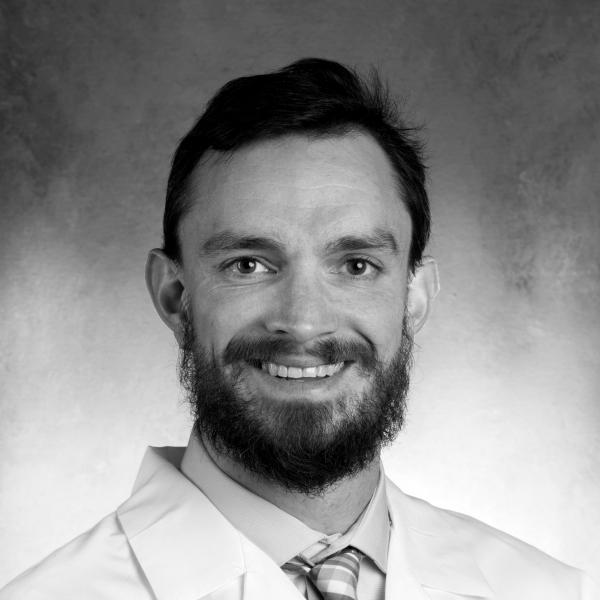The focus of the Biomedical Acoustics Development and Engineering Research Laboratory (BADER Lab) is the translation of therapeutic ultrasound for non- or minimally invasive treatment of cardiovascular and cancerous disease. Specifically, we utilize acoustic cavitation for combinatorial ablation and enhanced drug delivery treatment strategies of pathologies resistant to standard interventional techniques. To assess bubble activity and the resultant changes in tissue structure, we are developing multi-modal imaging approaches via diagnostic ultrasound and magnetic resonance imaging. Analytic and numerical bubble dynamics models are also utilized to gain insight into the mechanism of action of our therapeutic approaches. Current research topics include:
• Chronic thrombus ablation with histotripsy and thrombolytic drugs
• Passive cavitation and MR imaging to assess histotripsy-induced liquefaction
• In vitro assessment of histotripsy-enhanced drug delivery
• Histotripsy-induced sonochemical reactions for the treatment of cancer
• Numeric and analytic models of bubble dynamics
• Magnetic Resonance-guided transurethral prostate ablation
For more information, visit our laboratory website: baderlab.uchicago.edu
University of Mississippi
Oxford, MS
Ph.D. - Physics
2011
Grand Valley State University
Allendale, MI
B.S. - Physics
2005
Chirp-Coded Subharmonic Imaging With Volterra Filtering: Histotripsy Bubble Cloud Assessment In Vitro and Ex Vivo.
Chirp-Coded Subharmonic Imaging With Volterra Filtering: Histotripsy Bubble Cloud Assessment In Vitro and Ex Vivo. IEEE Trans Ultrason Ferroelectr Freq Control. 2025 May; 72(5):591-600.
PMID: 40178954
Enhancing Passive Cavitation Imaging Using pth Root Compression Delay, Sum, and Integrate Beamforming: In Vitro and in Vivo Studies.
Enhancing Passive Cavitation Imaging Using pth Root Compression Delay, Sum, and Integrate Beamforming: In Vitro and in Vivo Studies. IEEE Trans Biomed Eng. 2025 Feb 24; PP.
PMID: 40031858
Assessment of Catheter-Directed Thrombolysis and Histotripsy Treatment for Deep Vein Thrombosis.
Assessment of Catheter-Directed Thrombolysis and Histotripsy Treatment for Deep Vein Thrombosis. J Vasc Interv Radiol. 2025 Jun; 36(6):1051-1061.e5.
PMID: 39890017
Overview of Therapeutic Ultrasound Applications and Safety Considerations: 2024 Update.
Overview of Therapeutic Ultrasound Applications and Safety Considerations: 2024 Update. J Ultrasound Med. 2025 Mar; 44(3):381-433.
PMID: 39526313
Development of Convolutional Neural Network to Segment Ultrasound Images of Histotripsy Ablation.
Development of Convolutional Neural Network to Segment Ultrasound Images of Histotripsy Ablation. IEEE Trans Biomed Eng. 2024 06; 71(6):1789-1797.
PMID: 38198256
Contrast-Enhanced Imaging of Histotripsy Bubble Clouds Using Chirp-Coded Excitation and Volterra Filtering.
Contrast-Enhanced Imaging of Histotripsy Bubble Clouds Using Chirp-Coded Excitation and Volterra Filtering. IEEE Trans Ultrason Ferroelectr Freq Control. 2023 09; 70(9):989-998.
PMID: 37379172
In silico assessment of histotripsy-induced changes in catheter-directed thrombolytic delivery.
In silico assessment of histotripsy-induced changes in catheter-directed thrombolytic delivery. Front Physiol. 2023; 14:1225804.
PMID: 37449013
Histotripsy induces apoptosis and reduces hypoxia in a neuroblastoma xenograft model.
Histotripsy induces apoptosis and reduces hypoxia in a neuroblastoma xenograft model. Int J Hyperthermia. 2023; 40(1):2222941.
PMID: 37344380
Assessment of bubble activity generated by histotripsy combined with echogenic liposomes.
Assessment of bubble activity generated by histotripsy combined with echogenic liposomes. Phys Med Biol. 2022 Oct 31; 67(21).
PMID: 36220055
Corrigendum: Assessment of histotripsy-induced liquefaction with diagnostic ultrasound and magnetic resonance imagingin vitroandex vivo(2019Phys. Med. Biol.64095023).
Corrigendum: Assessment of histotripsy-induced liquefaction with diagnostic ultrasound and magnetic resonance imagingin vitroandex vivo(2019Phys. Med. Biol.64095023). Phys Med Biol. 2022 Sep 30; 67(19).
PMID: 36177650
